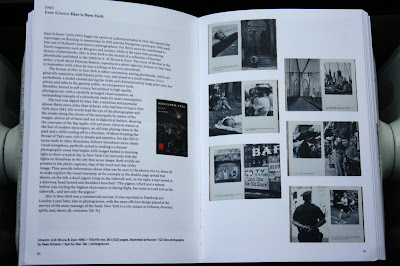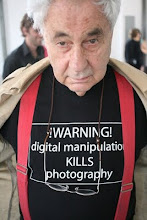SCHERER & TAK, KEES & MAX - This Is New York.
1961. Paper. London: Andre Deutsch / Bruna. 1961. First edition. 12mo. Stiff glazed pictorial wraps. A gorgeous copy of this excellent look at New York City profusely and beautifully illustrated with deep, gorgeous gravure reproduced photographs by Kees Scherer. Somewhat reminiscent of photographer William Klein's images in his seminal book "New York. Life Is Good For You and Good In New York Trance Witness Reveals". Scarce. especially in this beautiful condition. A great book.
New York in Photobooks is the catalogue of a traveling exhibition curated by Horacio Fernández, who is also the editor of the book: a collaborative effort in which, in addition to the many images, there are texts by numerous photography scholars.
The photographers represented include Berenice Abbott, Nobuyoshi Araki, Cecil Beaton, Mario Bucovich, Roy DeCarava, Bruce Davidson, Raymond De-pardon, Juan Fresán, Bruce Gilden, György Lörinczy, Lewis Hine, Evelyn Hofer, Karol Kallay, André Kertész, William Klein Helen Levitt, Danny Lyon, Daido Moriyama, Ugo Mulas, Robert Rauschenberg, Kees Scherer, Aaron Siskind, Weegee, Kojima Yasutaka, Ruiko Yoshida, among others.
Kees Scherer (1920-1993) was born in the Amsterdam working-class district called ‘de Jordaan’. Shortly after WWII, he began working as a freelance photographer and reached the pinnacle of photojournalism with high-profile reports about the flood disaster in the province of Zeeland (1953) and the Hungarian uprising (1956). He initiated World Press Photo in 1955 with Bram Wisman. In addition to his extensive work in colour, Scherer’s early work in black/white has also been receiving increasing attention in recent years. He depicted his favourite cities in exhaustive detail, namely Amsterdam, Paris and New York. (JR)
Fotopockets
De eerste foto pocket in de zwarte beertjes was nummer 51/52 - Vrouwen van Parijs, geschreven door André Maurois en met foto's van Nico Jesse. De pocket bestaat, net als de meeste andere foto pockets, uit een helft tekst en een helft foto's. Zoals de titel al zegt, de pocket bevat foto's van allerlei parijse vrouwen, van een non tot een debutante en van een danseres tot een naaister. De pocket zal gevolgd worden door vele andere foto pockets, waaronder nog een aantal over Parijs, namelijk Nachten van Parijs, Met het oog op Parijs en Meisjes van Parijs.
Een bijzondere set in de fotopockets is de drieluik Juliana, Beatrix, Prins Bernhard.
181/182

Hoe de meest gefotografeerde man van Nederland erin slaagt, zijn natuurlijkheid te bewaren, ook wanneer hij door tientallen toestellen achtervolgd en belaagd wordt? De foto hierachter geeft een deel van de verklaring: de Prins filmt en fotografeert zelf.
De eerst kleurenfoto zit in, hoe kan het ook anders, Van kleur tot zwart-wit (zb308/309). Deze pocket uit 1960 gaat over een nieuwe trend in de fotografie, namelijk kleurenfotografie. Na deze pocket zijn er nog genoeg zwart -wit foto-pockets uitgeven, maar gestaag neemt het aantal kleurenfoto's en kleurenpockets toch toe.
Een laatste bijzondere foto pocket is nummer 700:Holland - de wereld in kleur. Het bijzondere van deze pocket zit hem niet in het feit dat het een fotopocket is, maar in de taal. Hij is namelijk in 5 verschillende talen uitgegeven: Nederlands, Engels, Duits, Spaans en Esperanto. De omslag van de laatste staat hiernaast.


















































Geen opmerkingen:
Een reactie posten